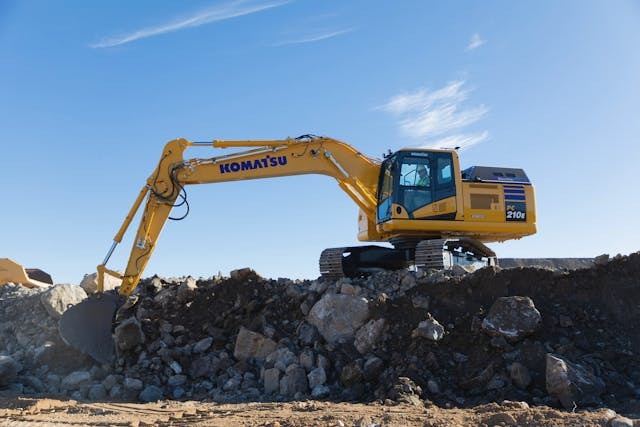Komatsu Unveils Groundbreaking Autonomous Electric Amphibious Dozer
In a pioneering stride for the construction equipment industry, Komatsu, in collaboration with Asunaro Aoki Construction Co., is set to launch its cutting-edge autonomous electric amphibious dozer. The unveiling will take place at the 2025 Future Society Showcase Project in Osaka, Kansai, Japan, offering a glimpse into the future of underwater and hazardous environment construction.
The Future of Construction: Underwater and Beyond
Komatsu’s new amphibious dozer promises to revolutionize construction, bringing unparalleled capabilities to underwater and shoreline projects. With the rising incidence of natural disasters like floods and tsunamis, there is a growing need for specialized equipment that can function in perilous and submerged conditions. Komatsu’s machine is geared towards addressing this demand, providing a robust solution for hazardous construction sites.
Advanced Features for Modern Challenges
The dozer boasts an array of advanced features designed to tackle the most challenging construction environments. It utilizes super remote control and unmanned operation technologies, which eliminate the need for on-site skilled operators. This is particularly crucial given the current shortage of skilled labor in the construction industry.
Moreover, the dozer is equipped with ICT functions, allowing for precise automatic control and operation at depths of up to 50 meters. This high level of automation not only enhances safety but also increases efficiency, ensuring that construction tasks are completed with pinpoint accuracy.
Innovative Power and Proven Expertise
Powering this innovative machine are likely the same Proterra-developed lithium-ion batteries that Komatsu has successfully implemented in its other electric vehicles. This collaboration has resulted in a powerful, zero-emission machine that aligns with global efforts to reduce carbon footprints in industrial operations.
Komatsu has a historical precedent for innovation in amphibious construction equipment. The company’s first radio-controlled amphibious bulldozer was introduced in 1971. Since then, over 36 units have been sold globally, involved in more than 1,200 underwater projects, including significant post-disaster reconstruction efforts.
Addressing Environmental and Workforce Challenges
The introduction of this autonomous electric amphibious dozer comes at a critical time. As climate change exacerbates natural disasters, there is an increasing frequency of projects requiring construction at the water’s edge or in shallow waters. Komatsu’s new dozer is tailored to meet these needs, addressing both environmental challenges and the industry’s skilled worker shortage. This is achieved through advanced automation, allowing operations to continue without the need for highly skilled technicians.
Anticipated Impact on the UK Construction Sector
While initially set to make its debut in Japan, the potential impact of Komatsu’s new dozer on the UK construction sector cannot be overstated. The UK faces similar issues with natural disasters, particularly flooding, and the dozer’s capabilities could be a game-changer for disaster response and shoreline construction projects across the country. The adoption of such advanced machinery can significantly enhance the UK’s readiness and resilience to climate-related challenges.
More details on the dozer’s specifications and capabilities are anticipated at its official debut. As the construction industry eagerly awaits further information, there is already considerable excitement surrounding the potential that Komatsu’s autonomous electric amphibious dozer holds for the future of construction. With its emphasis on sustainability, safety, and efficiency, this machine is set to make significant waves in the industry.
